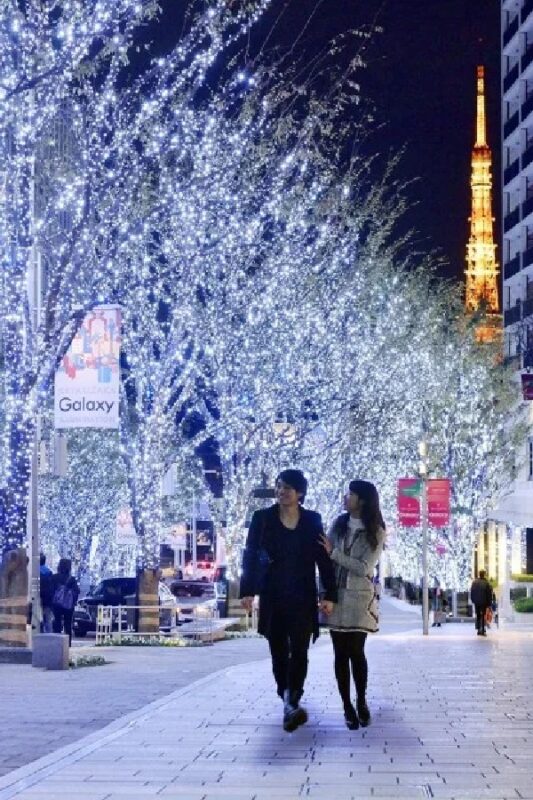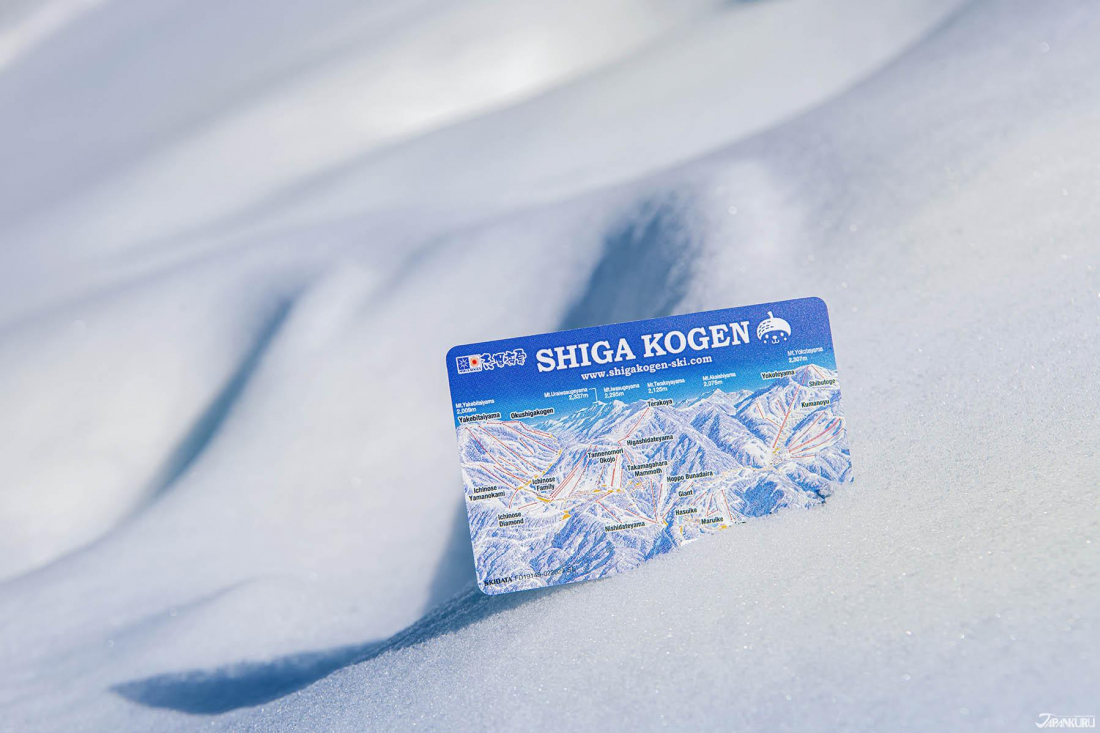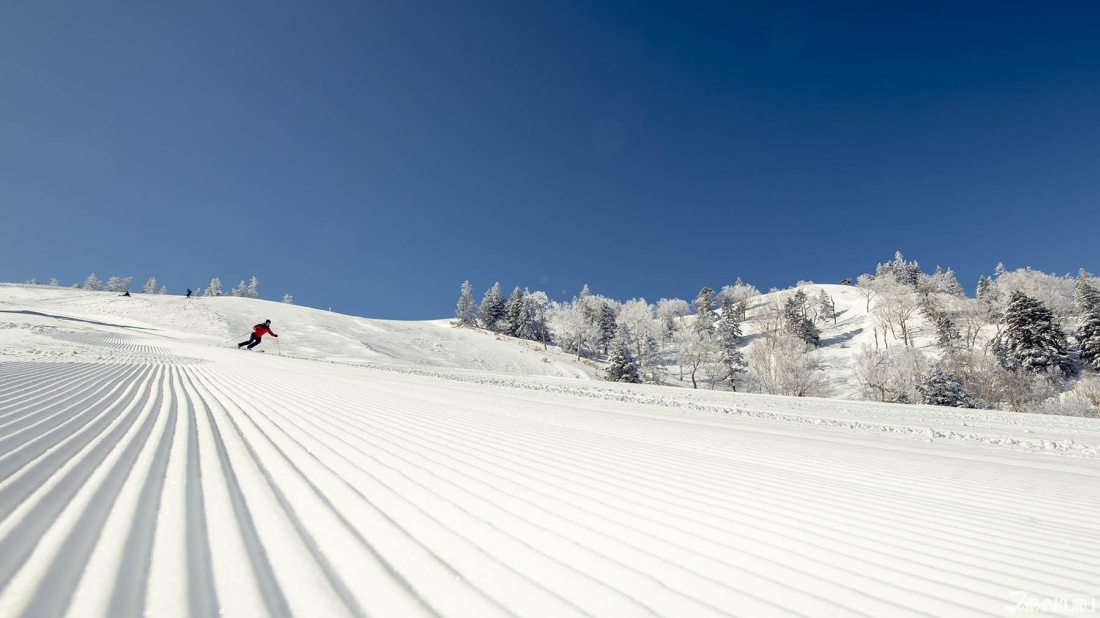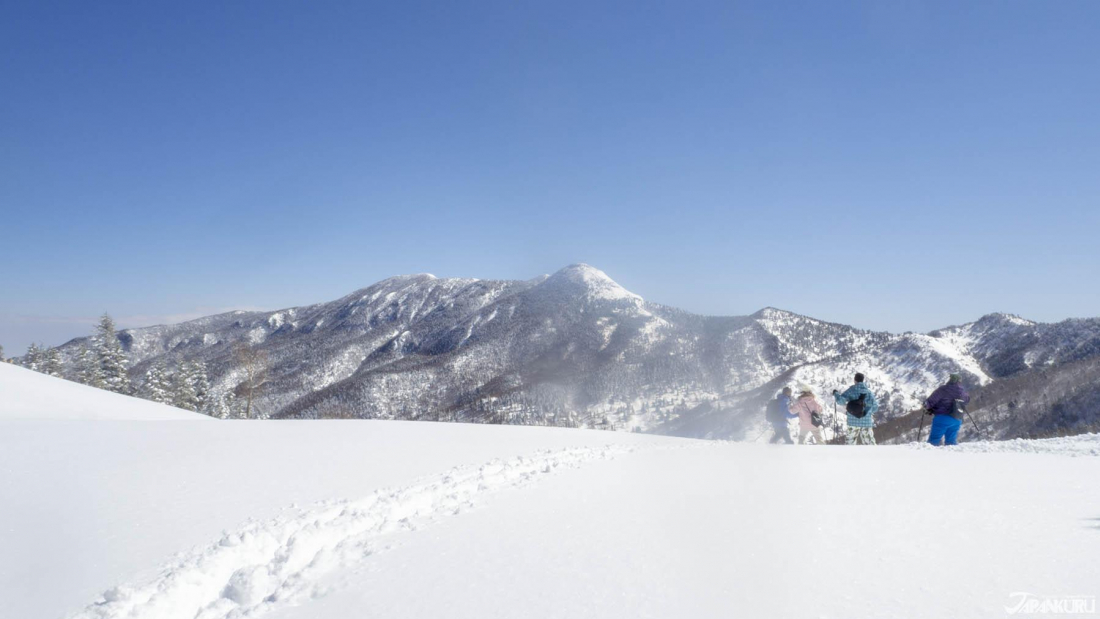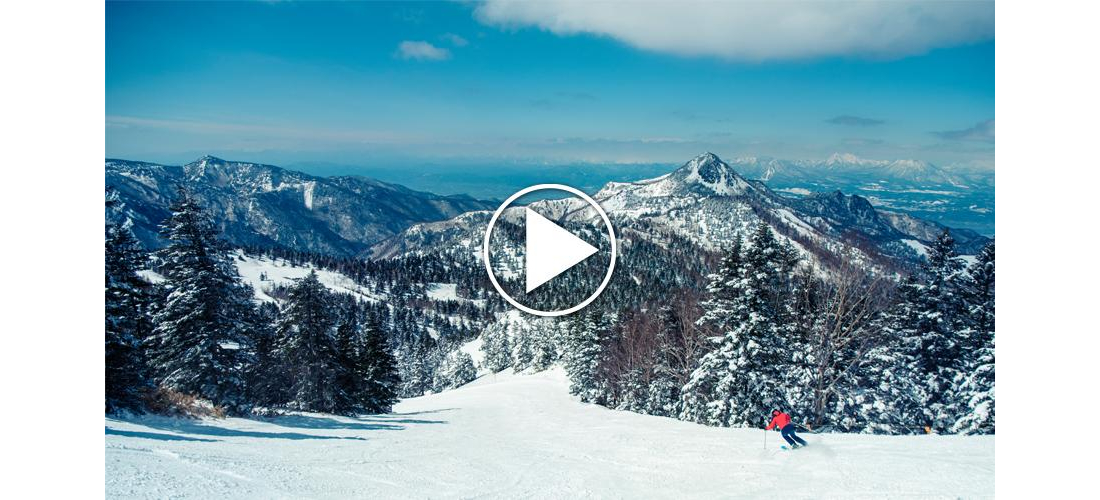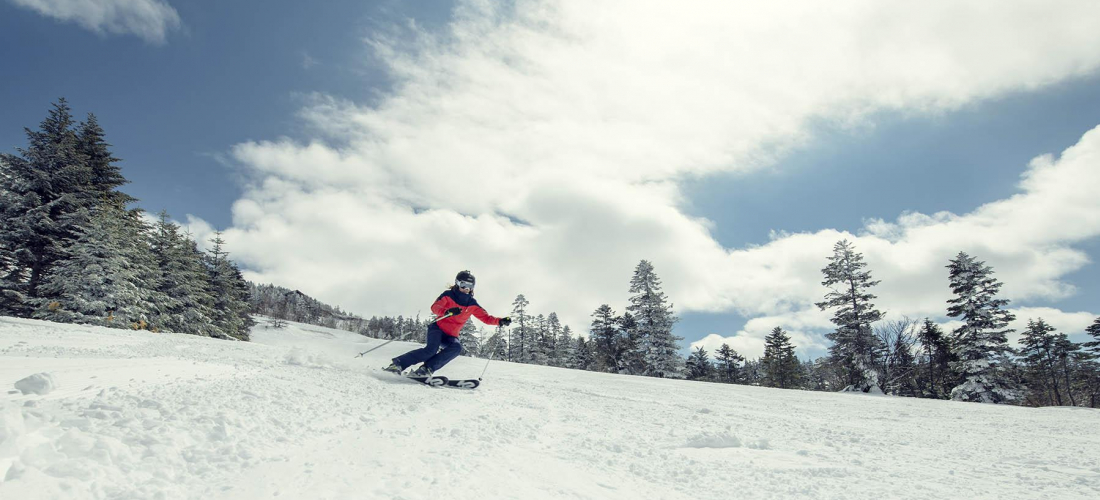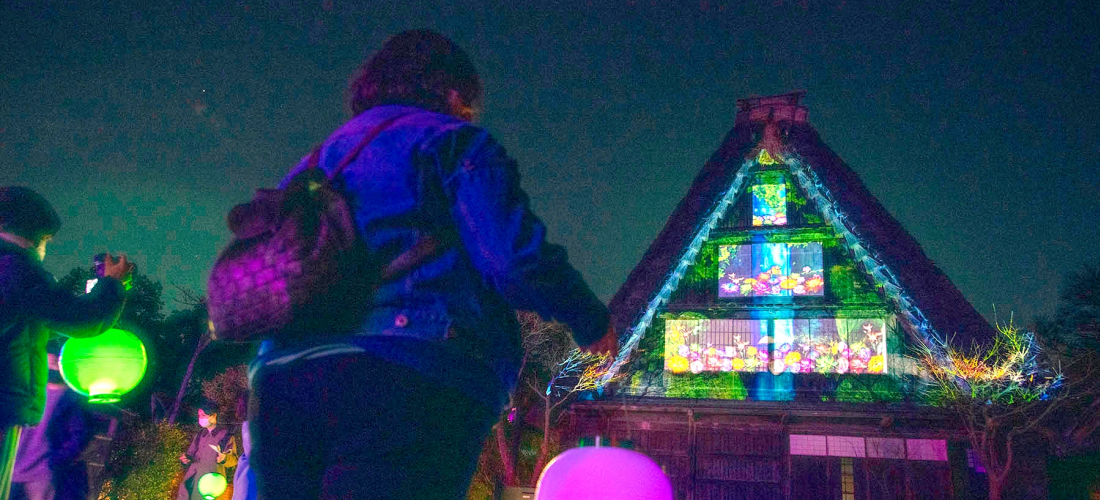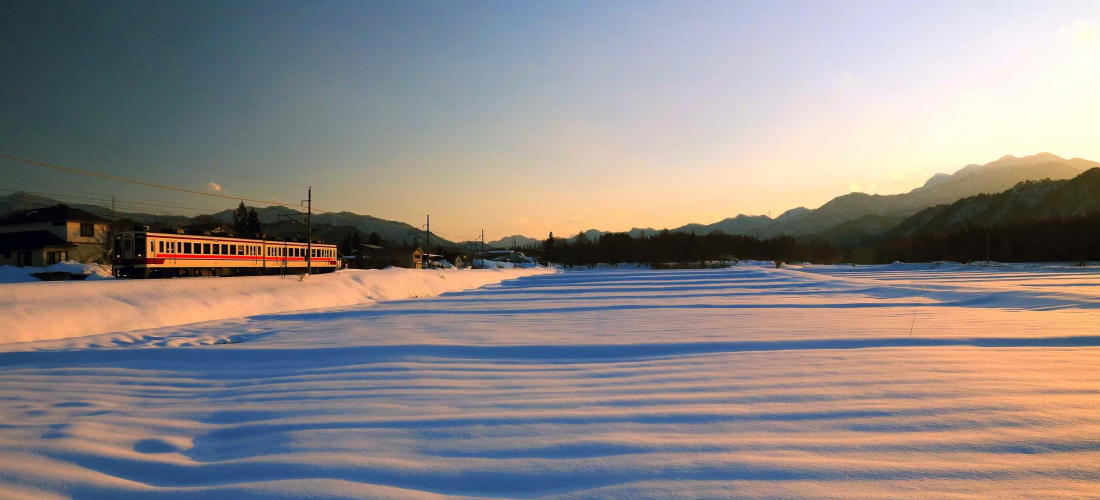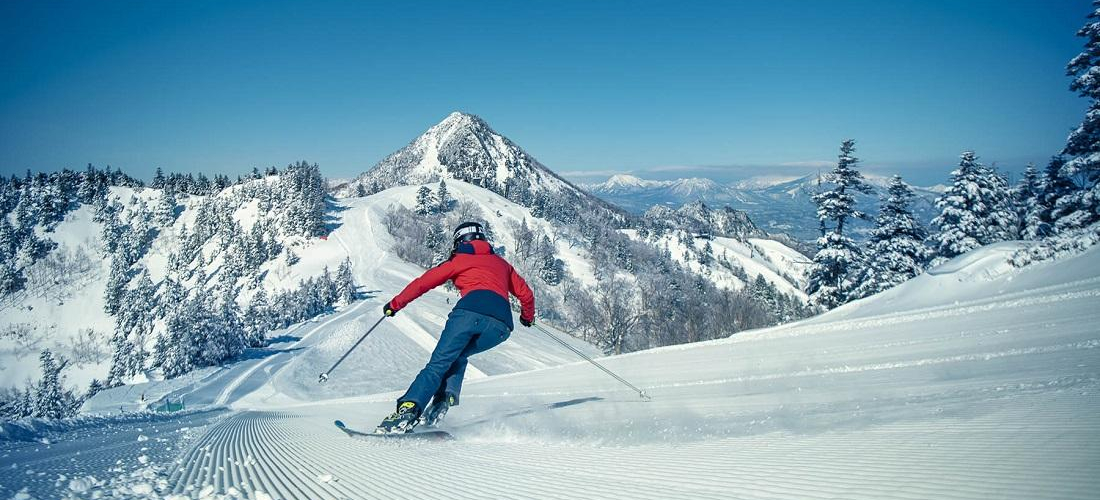
CONTENTS
Japan Powder snow, the highest ski slopes in Japan, and lots of them – ski lovers need to check out Japan’s Shiga Kogen Ski Resort.
Shiga Kogen Ski Resort
If you love to ski, you probably know about Japan Powder: some of the lightest and driest snow around, and a joy to ski. But if you're thinking of planning your next ski trip in Hokkaido or Hakuba, then you're missing out on what locals know is the best ski resort in Japan – Shiga Kogen, AKA the Shiga Highlands. Japan's highest ski slopes, and hands-down the best snow quality in Japan, plus a taste of small-town Japanese culture and a glimpse of 1998 Nagano Olympics history, Shiga Kogen is where you should ski this winter, and next.
7148 Hirao, Yamanochi, Shimotakai District, Nagano
Official Website (en)
Why Shiga Kogen?
If you're a true fan of skiing, you know that not all slopes are the same. Take a good look at what Shiga Kogen has to offer, you'll quickly see why local skiers will tell you it's a cut above the rest.
The biggest reason why experienced skiers flock to Shiga Kogen is simple: snow quality. Japan is, in general, known for powder skiing, and the deep powder snow, called "Japan Powder," is extremely dry and light. While you'll certainly find groomed snow around the Shiga Kogen area, fresh snow falls frequently, blanketing the mountains and giving skiers and snowboarders plenty of opportunities to cut through the fresh powder. Since Shiga Kogen has so many different ski runs, and Japanese winter sports fans in general are less interested in powder skiing, hit the slopes early in the morning at Shiga Kogen and you're almost guaranteed first tracks!
And while most ski resorts in Japan have background music playing along the mountains, at Shiga Kogen you don't have to worry about whether you want to listen to Japanese pop hits all day or not. They keep the mountainsides quiet, with no background music, letting you enjoy the satisfying sounds of slicing through the snow.
For all that fresh, light snow we can thank the elevation! While it might not be as high as Mount Fuji, the ski slopes in the Shiga Highlands are some of the highest of any ski resort in Japan, which means Shiga Kogen probably has the highest snow quality in Japan. While other popular Japanese destinations like Hokkaido or Hakuba can end up with fairly moist snow, Shiga Kogen is high enough that the dry snow stays nice and dry until the next snowfall. And Shiga Kogen is actually part of a Japanese national park, meaning the scenery is spectacularly preserved. There's no big company working behind the scenes here, just locals who love to enjoy the natural scenery, hoping to share the beauty of Shiga Kogen with the world!
Plus, as we touched on before, Shiga Kogen has a lot of ski runs! The ski resort is made of 18 different areas. So, while Shiga Kogen is especially beloved by dedicated ski fans, novices and old pros alike can find slopes to fit their preferences, powder or groomed. That even includes the ski runs that were actually used for the 1998 Winter Olympics in Nagano! Shiga Kogen is where the 1998 Olympic alpine skiing technical events were held. But if the resort's five different ski areas sound overwhelming, don't worry – not only do they have a convenient free shuttle throughout the area to get you to different ski slopes, and some handy universal ski lift passes, but we've also got some recommendations for you.
Must-Sees & Must-Skis
There aren't any bad options when it comes to where to ski in Shiga Kogen, but if you're not sure where to start, you may as well start from the top! Literally – start your day from the peak of Yokoteyama (横手山), a mountain sometimes called Mount Yokote. The Yokoteyama-Shibutoge Ski Resort area tops out at an elevation of 2,307 meters, the highest official ski slope in Japan, giving you a spectacular view as you glide right through the fluffy snowfall.
Less ambitious skiers, or anybody looking for a slightly different way to enjoy the view, might also be interested in the snowshoe hiking course on Yokoteyama.
The Terakoya (寺小屋) Ski Resort might not quite have the height of Yokoteyama, but it is one spot where the Olympic skiers hit the slopes in 1998! And at the foot of Mount Terakoya is one of the area's handful of kids areas, where fun-lovers of all ages can go sledding and start snowball fights.
And finally, Yakebitaiyama (焼額山) Ski Resort in the Okushigakogen area not only hosted Nagano Winter Olympic events, it now has a huge variety of trails to choose from.
The Other Charms of Shiga Kogen
Backcountry skiing (off-piste skiing) at Shiga Kogen has to be done through pre-arranged guided tours, but it's worth making a reservation. While Shiga Kogen has trails of all kinds, the unique chance to go off-piste and explore the potential of backcountry skiing inside of Joshin'etsukogen National Park is a unique treat. Japan's pristine, untouched mountainsides are just calling out to be admired.
Once the sun sets, that doesn't mean it has to be the end of the day! If you're ready to keep going, or you just relish the romance of night skiing (or snowboarding), it's a fun way to finish out the evening at Shiga Kogen.
(And it gives you a chance to appreciate the night sky filled with stars.)
Shiga Kogen is less of a party place and more of a gathering place for winter sports fans, but there are still places to grab a good drink and relax with your travel companions. Pub-goers might enjoy a visit to Teppa Room, which has a variety of local Shiga Kogen beers on tap, and some pretty tasty eats to go with them.
Teppa Room
1163 Hirao, Yamanouchi-machi, Shimotakai-gun
Official Website (jp) / Official Facebook
And last but not least, the onsen (温泉, hot springs) in the area are popular with both humans… and monkeys! That's right, while you might certainly enjoy an hour soaking away in a local bath like Kumanoyu Onsen, one of the most popular sightseeing attractions in the area is actually the onsen-loving snow monkeys at Jigokudani Monkey Park, easily reachable by bus from the ski resort. Watching the little macaques relax in the steaming spring water and lazily groom their fur might be even more relaxing than taking a bath yourself.
Kumanoyu Onsen (熊の湯温泉)
Kumanoyu Hotel, 7148 Hirao, Yamanochi, Shimotakai District, Nagano
Official Website (en)
Jigokudani Yaen-Koen Monkey Park (地獄谷野猿公苑)
6845 Yamanouchi-machi, Shimotakai-gun, Nagano
Official Website (en)
Planning Your Trip to Shiga Kogen
Access
So, how do you get to this ski resort off in the mountains? Well, thanks to a direct bus from Nagano station, it's pretty easy!
⇩
⇒ Hokuriku Shinkansen (Bullet Train) ⇒
⇩
Nagano Station
⇩
⇒ Direct Bus (West Exit Bus Stop #23) ⇒
⇩
Shiga Kogen Ski Resort!
Lodgings
Thanks to the impressive size and breadth of the Shiga Kogen Ski Resort area, there are plenty of different places to stay. Which hotel you choose might depend on a few different factors – aside from the obvious matter of price point, choosing a hotel close to the slopes you're interested in skiing on your first day (or most often) might be convenient. For those who like a little nightlife, it might even be worth choosing a hotel near Teppa Room or another bar, so you don't have to worry about when the last free shuttle bus might leave.
Fortunately, a brand new system that will make reserving a room at any of the Shiga Kogen hotels is in the works right now, so before long it should be easier than ever to find the perfect room in at the ski resort!
Hotel Grand Phenix is a popular place to stay for a number of reasons – not only is it right off of a trail, but the striking European-style architecture was designed by European designers and put together with materials shipped over from the continent, and the upscale restaurants inside the hotel draw people staying all over the area.
Hotel Grand Phenix
Okushiga-Kogen, Yamanouchi-machi, Shimotakai, Nagano
Official Website (en)
Hotel Shiga Sunvalley is not only right across the street from a ski run that has easier routes for newer skiers (and some more difficult routes), but they also go all out with traditional Japanese-style rooms and multi-course Japanese meals in the dining room.
Hotel Shiga Sunvalley
7148 Hirao, Yamanochi, Shimotakai District, Nagano
Official Website (jp)
See You Soon, Shiga Kogen!
Ready to slide through powder snow so airy and dry that you can jump in a pile, brush it off, and walk away dry as a bone? Hoping to get a taste of some backcountry skiing in the middle of a magnificent national park? Want to try out winter sports after the sun goes down? Then start checking in with Shiga Kogen on their facebook page to see the latest videos straight from the slopes, and let us know about all your plans for Shiga Kogen (or your experiences there) on the Japankuru twitter, instagram, and facebook!
Details
NAME:Shiga Kogen Ski Resort (志賀高原スキー場)
MAP
ACCESS:From Nagano Station, take the express bus to Shiga Kogen.
COMMENT
FEATURED MEDIA
VIEW MORE 
A New Tokyo Animal Destination: Relax & Learn About the World’s Animals in Japan
#pr #japankuru #anitouch #anitouchtokyodome #capybara #capybaracafe #animalcafe #tokyotrip #japantrip #카피바라 #애니터치 #아이와가볼만한곳 #도쿄여행 #가족여행 #東京旅遊 #東京親子景點 #日本動物互動體驗 #水豚泡澡 #東京巨蛋城 #เที่ยวญี่ปุ่น2025 #ที่เที่ยวครอบครัว #สวนสัตว์ในร่ม #TokyoDomeCity #anitouchtokyodome

Shohei Ohtani Collab Developed Products & Other Japanese Drugstore Recommendations From Kowa
#pr #japankuru
#kowa #syncronkowa #japanshopping #preworkout #postworkout #tokyoshopping #japantrip #일본쇼핑 #일본이온음료 #오타니 #오타니쇼헤이 #코와 #興和 #日本必買 #日本旅遊 #運動補充能量 #運動飲品 #ช้อปปิ้งญี่ปุ่น #เครื่องดื่มออกกำลังกาย #นักกีฬา #ผลิตภัณฑ์ญี่ปุ่น #อาหารเสริมญี่ปุ่น

도쿄 근교 당일치기 여행 추천! 작은 에도라 불리는 ‘가와고에’
세이부 ‘가와고에 패스(디지털)’ 하나면 편리하게 이동 + 가성비까지 완벽하게! 필름카메라 감성 가득한 레트로 거리 길거리 먹방부터 귀여움 끝판왕 핫플&포토 스폿까지 총집합!
Looking for day trips from Tokyo? Try Kawagoe, AKA Little Edo!
Use the SEIBU KAWAGOE PASS (Digital) for easy, affordable transportation!
Check out the historic streets of Kawagoe for some great street food and plenty of picturesque retro photo ops.
#pr #japankuru #도쿄근교여행 #가와고에 #가와고에패스 #세이부패스 #기모노체험 #가와고에여행 #도쿄여행코스 #도쿄근교당일치기 #세이부가와고에패스
#tokyotrip #kawagoe #tokyodaytrip #seibukawagoepass #kimono #japantrip

Hirakata Park, Osaka: Enjoy the Classic Japanese Theme Park Experience!
#pr #japankuru #hirakatapark #amusementpark #japantrip #osakatrip #familytrip #rollercoaster #retrôvibes #枚方公園 #大阪旅遊 #關西私房景點 #日本親子旅行 #日本遊樂園 #木造雲霄飛車 #히라카타파크 #สวนสนุกฮิราคาตะพาร์ค

🍵Love Matcha? Upgrade Your Matcha Experience With Tsujiri!
・160년 전통 일본 말차 브랜드 츠지리에서 말차 덕후들이 픽한 인기템만 골라봤어요
・抹茶控的天堂!甜點、餅乾、飲品一次滿足,連伴手禮都幫你列好清單了
・ส่องมัทฉะสุดฮิต พร้อมพาเที่ยวร้านดังในอุจิ เกียวโต
#pr #japankuru #matcha #matchalover #uji #kyoto #japantrip #ujimatcha #matchalatte #matchasweets #tsujiri #말차 #말차덕후 #츠지리 #교토여행 #말차라떼 #辻利抹茶 #抹茶控 #日本抹茶 #宇治 #宇治抹茶 #日本伴手禮 #抹茶拿鐵 #抹茶甜點 #มัทฉะ #ของฝากญี่ปุ่น #ชาเขียวญี่ปุ่น #ซึจิริ #เกียวโต

・What Is Nenaito? And How Does This Sleep Care Supplement Work?
・你的睡眠保健品——認識「睡眠茶氨酸錠」
・수면 케어 서플리먼트 ‘네나이토’란?
・ผลิตภัณฑ์เสริมอาหารดูแลการนอน “Nenaito(ネナイト)” คืออะไร?
#pr #japankuru #sleepcare #japanshopping #nenaito #sleepsupplement #asahi #睡眠茶氨酸錠 #睡眠保健 #朝日 #l茶胺酸 #日本藥妝 #日本必買 #일본쇼핑 #수면 #건강하자 #네나이토 #일본영양제 #อาหารเสริมญี่ปุ่น #ช้อปปิ้งญี่ปุ่น #ร้านขายยาญี่ปุ่น #ดูแลตัวเองก่อนนอน #อาซาฮิ

Japanese Drugstore Must-Buys! Essential Items from Hisamitsu® Pharmaceutical
#PR #japankuru #hisamitsu #salonpas #feitas #hisamitsupharmaceutical #japanshopping #tokyoshopping #traveltips #japanhaul #japantrip #japantravel

Whether you grew up with Dragon Ball or you just fell in love with Dragon Ball DAIMA, you'll like the newest JINS collab. Shop this limited-edition Dragon Ball accessory collection to find some of the best Dragon Ball merchandise in Japan!
>> Find out more at Japankuru.com! (link in bio)
#japankuru #dragonball #dragonballdaima #animecollab #japanshopping #jins #japaneseglasses #japantravel #animemerch #pr

This month, Japankuru teamed up with @official_korekoko to invite three influencers (originally from Thailand, China, and Taiwan) on a trip to Yokohama. Check out the article (in Chinese) on Japankuru.com for all of their travel tips and photography hints - and look forward to more cool collaborations coming soon!
【橫濱夜散策 x 教你怎麼拍出網美照 📸✨】
每次來日本玩,是不是都會先找旅日網紅的推薦清單?
這次,我們邀請擁有日本豐富旅遊經驗的🇹🇭泰國、🇨🇳中國、🇹🇼台灣網紅,帶你走進夜晚的橫濱!從玩樂路線到拍照技巧,教你怎麼拍出最美的夜景照。那些熟悉的景點,換個視角說不定會有新發現~快跟他們一起出發吧!
#japankuru #橫濱紅磚倉庫 #汽車道 #中華街 #yokohama #japankuru #橫濱紅磚倉庫 #汽車道 #中華街 #yokohama #yokohamaredbrickwarehouse #yokohamachinatown

If you’re a fan of Vivienne Westwood's Japanese designs, and you’re looking forward to shopping in Harajuku this summer, we’ve got important news for you. Vivienne Westwood RED LABEL Laforet Harajuku is now closed for renovations - but the grand reopening is scheduled for July!
>> Find out more at Japankuru.com! (link in bio)
#japankuru #viviennewestwood #harajuku #omotesando #viviennewestwoodredlabel #viviennewestwoodjapan #비비안웨스트우드 #오모테산도 #하라주쿠 #日本購物 #薇薇安魏斯伍德 #日本時尚 #原宿 #表參道 #japantrip #japanshopping #pr

Ready to see TeamLab in Kyoto!? At TeamLab Biovortex Kyoto, the collective is taking their acclaimed immersive art and bringing it to Japan's ancient capital. We can't wait to see it for ourselves this autumn!
>> Find out more at Japankuru.com! (link in bio)
#japankuru #teamlab #teamlabbiovortex #kyoto #kyototrip #japantravel #artnews
Photos courtesy of teamLab, Exhibition view of teamLab Biovortex Kyoto, 2025, Kyoto ® teamLab, courtesy Pace Gallery

Japanese Makeup Shopping • A Trip to Kamakura & Enoshima With Canmake’s Cool-Toned Summer Makeup
#pr #canmake #enoshima #enoden #에노시마 #캔메이크 #japanesemakeup #japanesecosmetics

⚔️The Robot Restaurant is gone, but the Samurai Restaurant is here to take its place. Check it out, and don't forget your coupon!
🍣신주쿠의 명소 로봇 레스토랑이 사무라이 레스토랑으로 부활! 절찬 쿠폰 발급중
💃18歲以上才能入場的歌舞秀,和你想的不一樣!拿好優惠券去看看~
#tokyo #shinjuku #samurairestaurant #robotrestaurant #tokyotrip #도쿄여행 #신주쿠 #사무라이레스토랑 #이색체험 #할인이벤트 #歌舞伎町 #東京景點 #武士餐廳 #日本表演 #日本文化體驗 #japankuru #japantrip #japantravel #japanlovers #japan_of_insta

Japanese appliance & electronics shopping with our KOJIMA x BicCamera coupon!
用JAPANKURU的KOJIMA x BicCamera優惠券買這些正好❤️
코지마 x 빅 카메라 쿠폰으로 일본 가전 제품 쇼핑하기
#pr #japankuru #japanshopping #kojima #biccamera #japaneseskincare #yaman #dji #osmopocket3 #skincaredevice #日本購物 #美容儀 #相機 #雅萌 #日本家電 #일본여행 #면세 #여행꿀팁 #일본쇼핑리스트 #쿠폰 #일본쇼핑 #일본브랜드 #할인 #코지마 #빅카메라 #japankurucoupon
MAP OF JAPAN
SEARCH BY REGION

LATEST
VIEW MOREEVENT CALENDAR
VIEW MORE